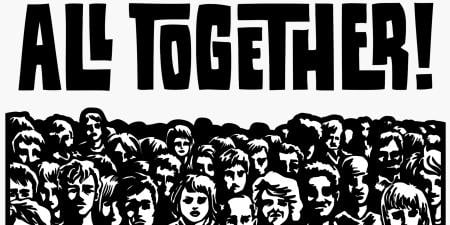Case
Bill, a third-year medical student, had just started his internal medicine clerkship rotation. Seriously considering a career in primary care medicine, Bill was eager to be exposed to as many clinical scenarios as possible during this two-month rotation.
The first patient he was assigned to care for was Mr. Wolfe, who came to the emergency room with shortness of breath and was subsequently admitted for congestive heart failure (CHF). Mr. Wolfe responded well to medical treatment, and Bill was able to learn firsthand how to care for CHF patients. Because Mr. Wolfe was 68 and this was his second hospitalization in the last 9 months for CHF exacerbation, the resident physician in charge wanted Bill to make sure that Mr. Wolfe understood the importance of taking his medications and limiting his sodium intake. As a result of their many conversations, Bill developed a good rapport with Mr. Wolfe.
On the day that Mr. Wolfe was being discharged, Bill visited to see if he had any questions and to wish him well. Mr. Wolfe thanked Bill for his attention and care and before parting ways said, “I’ve been meaning to ask you about that button you’ve been wearing.”
Bill explained, “It’s a Human Rights Campaign pin. The HRC works to ensure that gay and lesbian Americans have equal basic rights, including the right to marriage.”
Mr. Wolfe paused before muttering “Uh, OK. Thanks for stopping by.”
Later that day, Bill told his classmate Anna about his conversation with Mr. Wolfe, saying, “It was so disappointing. I really like Mr. Wolfe and felt like we had a great relationship. Then he asked about my pin and acted weird when I said what it was.” Bill added that he thought HRC’s mission was an important one for doctors to support because social stigmatization of gay, lesbian, bisexual, and transgender people could have detrimental health effects.
Anna said, “But if it makes some patients uncomfortable, maybe it’s better if you just stop wearing the pin at work.”
Commentary
When approaching this case, it’s important to begin by ruling out a common piece of nonsense. We often hear people refer to any controversial issue as “political,” and this characterization seems intended to imply that all positions on the issue are mere matters of opinion and the topic has no place in polite company and certainly not in professional relationships. Of course, as virtually anything can become the subject of partisan politics and punditry, to buy into this rhetorical ploy would nullify the ability of the medical profession to advocate for measures to foster public health. Such straightforwardly appropriate matters for advocacy as food labeling and measures to encourage nutritious eating and a health-promoting lifestyle are all mediated by public policy and become the subject of political discourse. The medical profession cannot be required to refrain from advocacy that promotes the general health and well-being of the populace and still be worthy of its status as a profession. The profession must use its expertise and influence to promote sound public policy related to the health of society [1]. While any particular issue can seem too controversial at the time, in the long run a consistent record of advocating for the common good is likely to build public trust [2].
We can easily see this in regard to once-controversial issues that we now view through the tincture of time. The medical profession in the United States reflected our nation’s racism for many decades in its disparate treatment of black and white patients, and the American Medical Association allowed its Southern member states to segregate the profession [3]. While this may have been politically noncontroversial at the time, this history is shameful in retrospect. Medicine should have led in disregarding race in an effort to promote the health and well-being of all.
Conversely, we admire the leadership of the medical profession in treating patients with AIDS at a time when the general public was fearful and prone to stigmatizing the sufferers. There can be little doubt that the courageous action of physicians who often lost their other patients when it became known that they treated patients with HIV promoted the public health by working toward an understanding of AIDS as a disease in need of treatment and by educating the public on appropriate ways to prevent transmission. So we must not rule out that physicians and medical students can and should sometimes risk being seen as “political” in order to promote health.
Of course, physicians and medical students should use practical judgment in deciding when and how to engage the public about a particular issue. To wear a button for each and every cause runs the risk of alienating patients while producing no real impact. It is difficult to judge whether Bill’s wearing of this button and his way of explaining it to patients like Mr. Wolfe who make inquiries has crossed this line. I’m not sure that we can draw bright lines, but I can suggest two commonsense guideposts that emanate directly from the role of the medical profession as promoting health and educating the public regarding the role of the profession in doing so.
- The more closely an issue is connected to the good of patients and the health of the public, the more justifiable is the introduction of this expression in the clinical setting.
- Institutional values and mission-critical information should be expressed in a form that maximizes potential efficacy.
Evaluating Bill’s actions in light of these principles raises some concerns. First, while Bill understands his wearing of the button in terms of creating a welcoming environment in the clinic for members of the LGBT community, it’s unlikely that Mr. Wolfe understood Bill’s response in this light. Bill mentioned human rights, but Mr. Wolfe may well have focused on Bill’s mention of the same-sex marriage issue, whose relevance to health care might not be obvious. Bill’s response would adhere more closely to the guideposts if he had mentioned an implication relevant to the health sphere, such as the right to have the person who knows you best make your health care decisions when you are unable to do so, i.e., one of the reasons why marriage equality is seen as a positive from a health care perspective.
Similarly, the efficacy of buttons being worn by individual practitioners may be questionable. Does allowing each medical student and health care professional to wear any button he or she wishes promote the public health? Or is it more likely that the benefits will be outweighed by misunderstandings as happened in this case? Will particular individuals misuse the privilege by expressing biases and views that may not promote the health of patients and the public? Thus, it certainly seems reasonable for a health care institution or a medical school to be fairly restrictive in its policy regarding this matter. As a result, many institutions might justifiably ban such expressions from the white coat. However, as our medical schools and residency programs should foster physician advocacy, we hope that educators will seek a middle way.
For instance, medical schools and teaching hospitals might involve student groups in the deliberative and policymaking process. Or they might choose to allow only symbols and expressions that are part of coordinated public information campaigns by chartered student organizations or professional societies. These would, of course, still be subject to the approval of the hospital, which would want to ensure that such expressions were consonant with the values of the institution and expressed appropriately.
In sum, Bill did little that is blameworthy. We must accept that medical students are being prepared for a role that comes with multiple complex duties. Duties to patients and duties to promote the general health of the public can be in tension and must be appropriately balanced. It’s easy to miss the mark in one direction or another. It is the role of educational institutions to foster mechanisms for developing policies and approaches for striking these balances. Resolving the balance by ignoring one set of duties will not do for our contemporary medical education institutions.
References
-
Kuczewski MG. Teaching biomedical ethics as professionalism in the United States. Diametros. 2010;25:30-37. http://www.diametros.iphils.uj.edu.pl/serwis/pdf/diam25kuczewski.PDF. Accessed May 30, 2014.
- Kuczewski MG, Brubaker L. Medical education as mission: why one medical school chose to accept DREAMers. Hastings Cent Rep. 2013;43(6):21-24.
-
Washington HA, Baker RB, Olakanmi O, Savitt TL, et al; Writing Group on the History of African Americans and the Medical Profession. Segregation, civil rights, and health disparities: the legacy of African American physicians and organized medicine, 1910-1968. J Natl Med Assoc. 2009;101(6):513-527.



